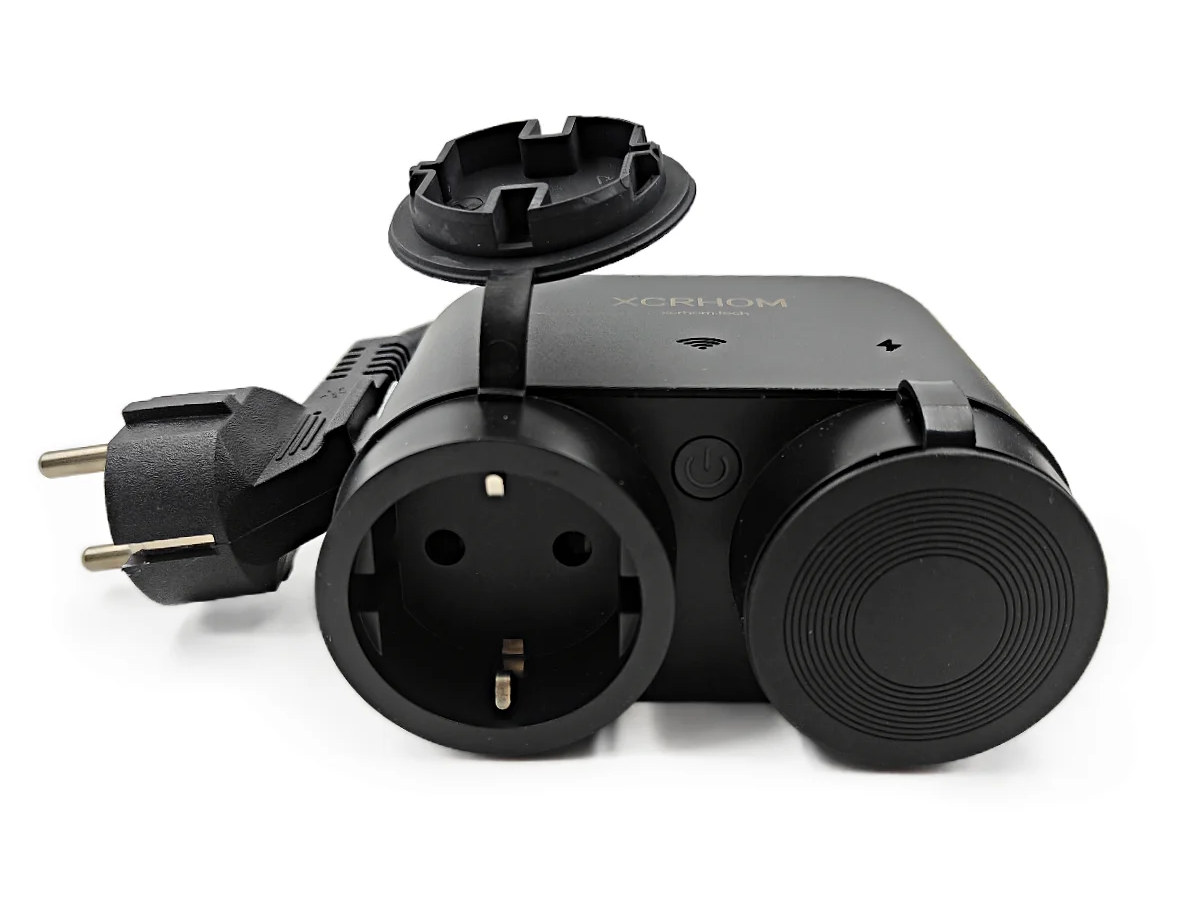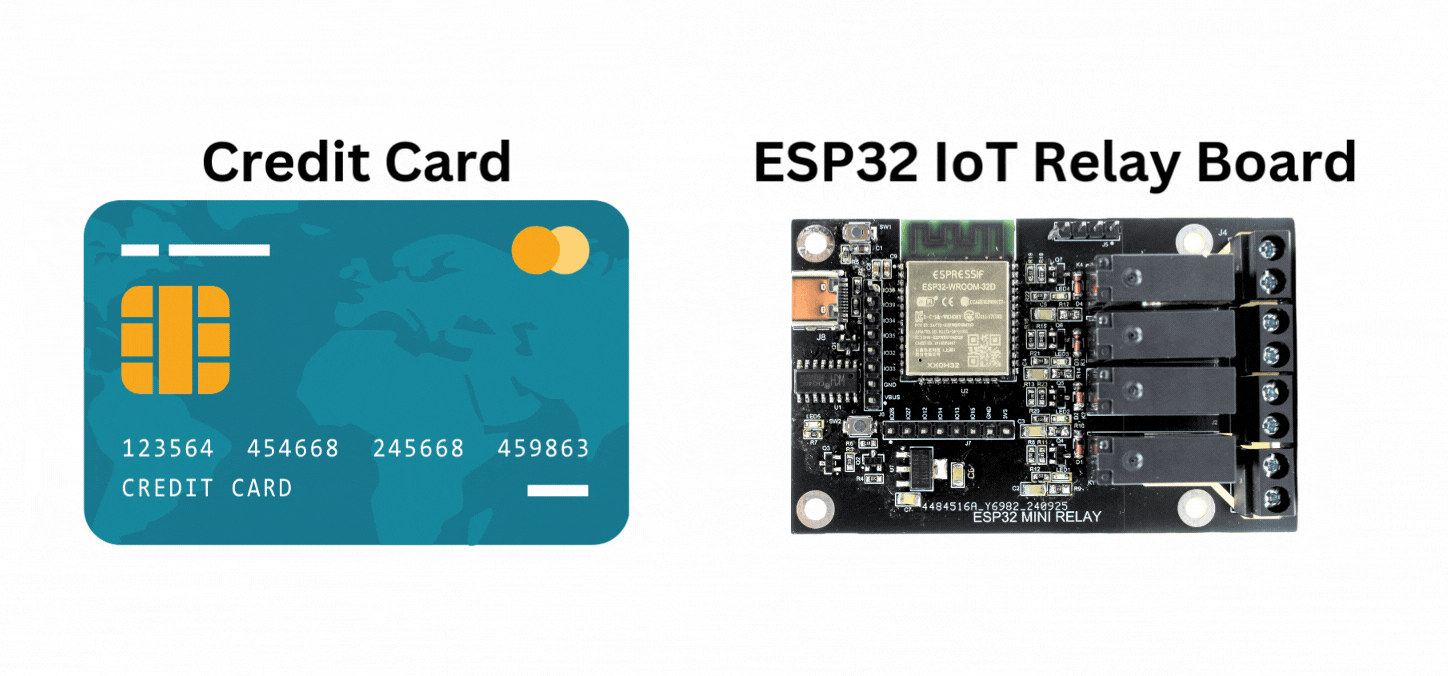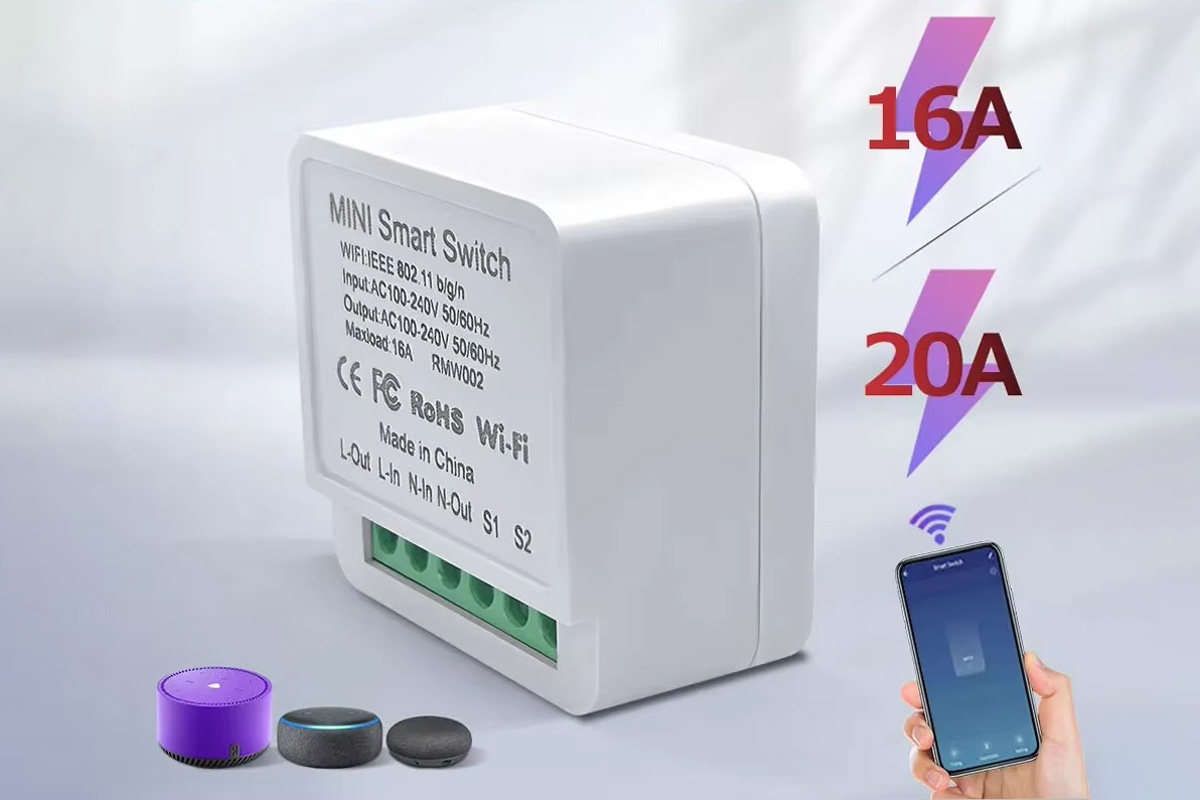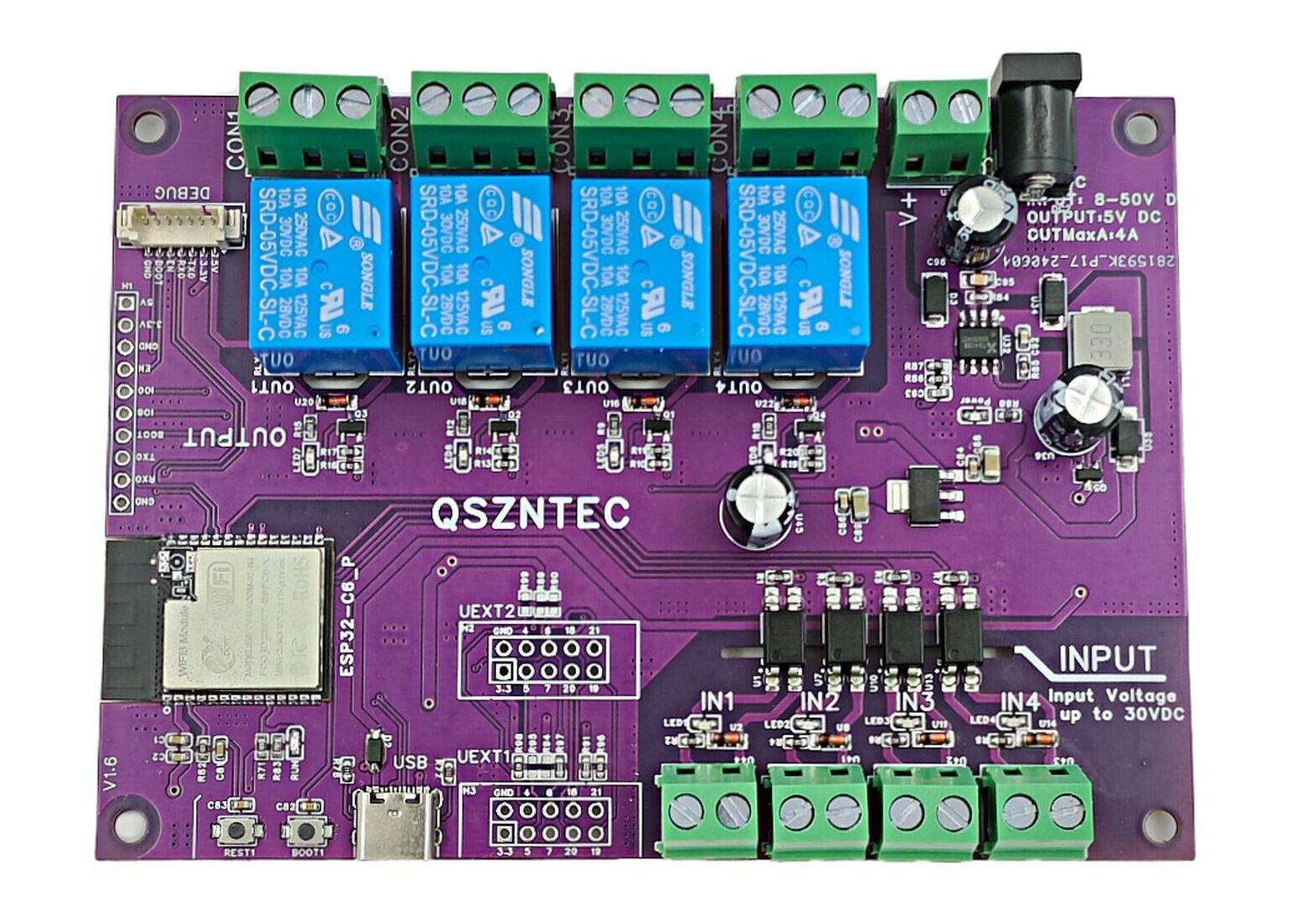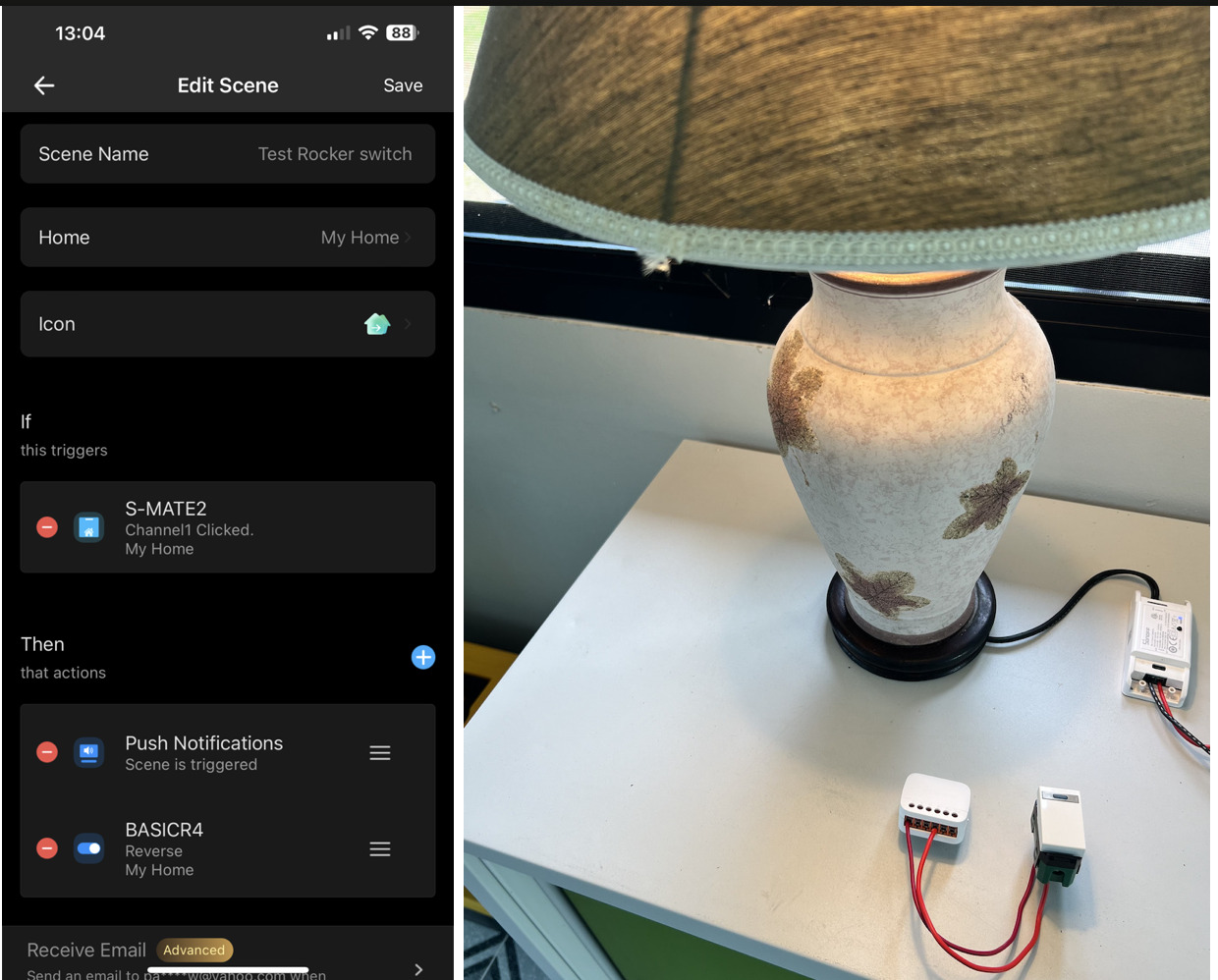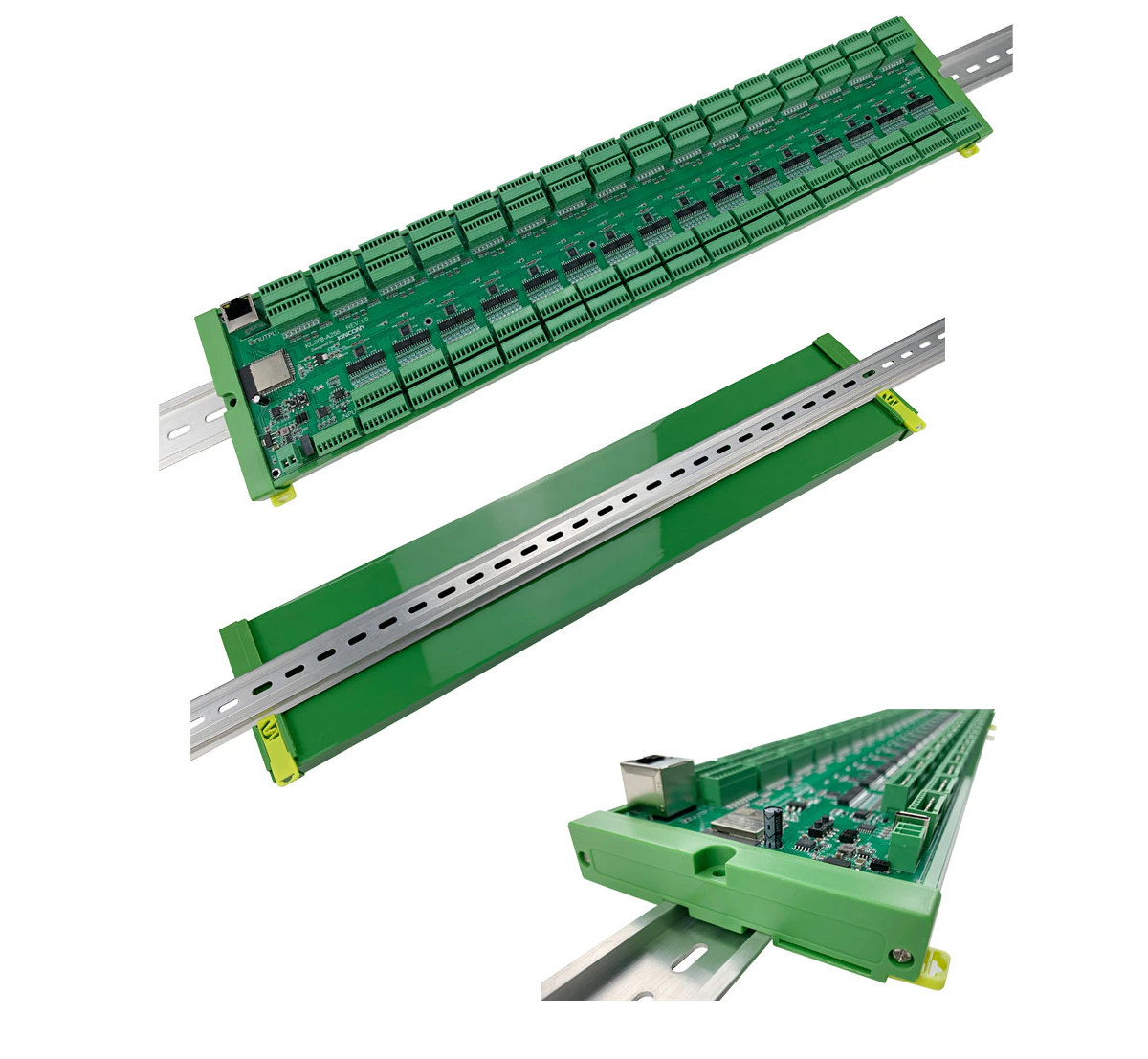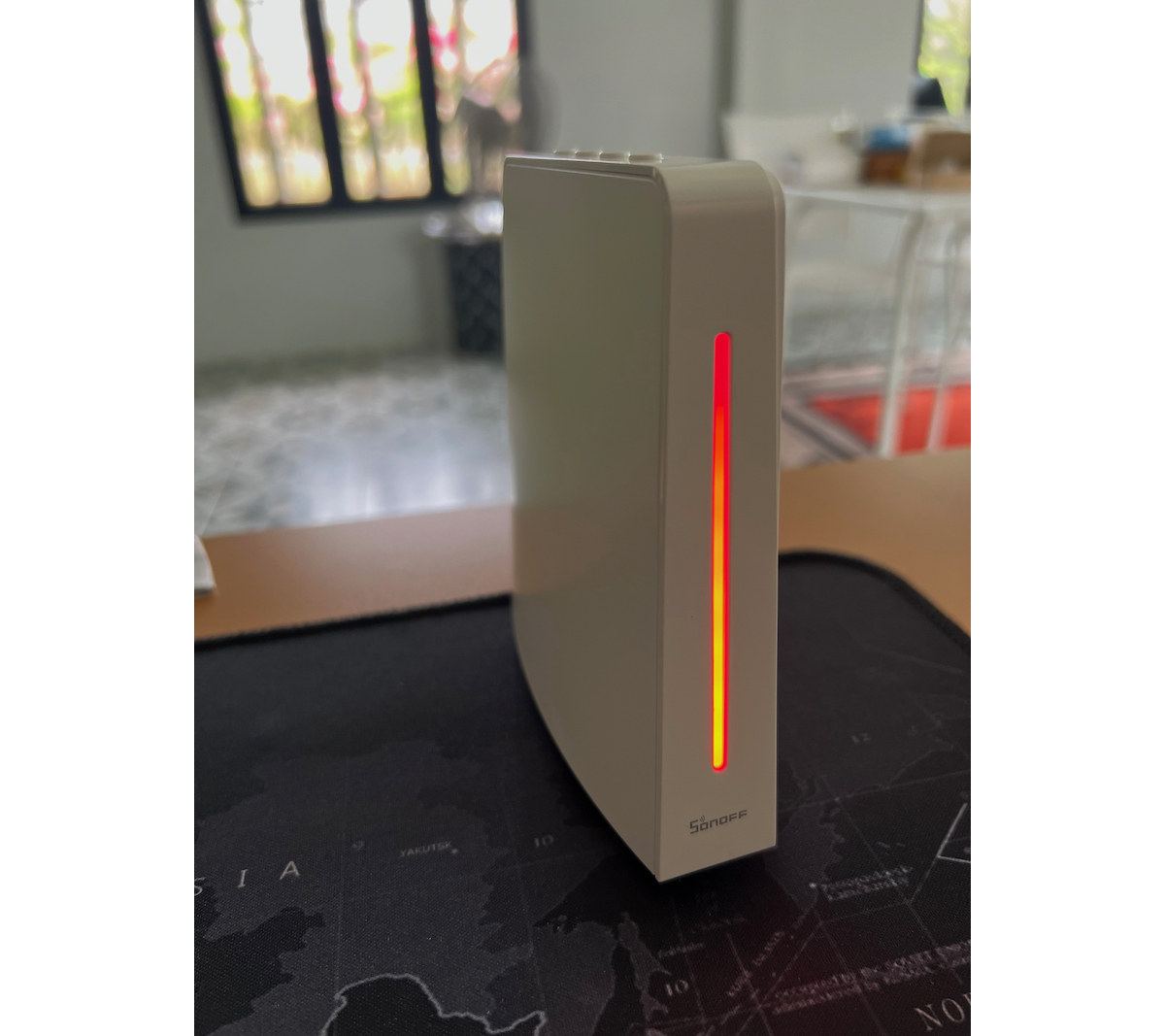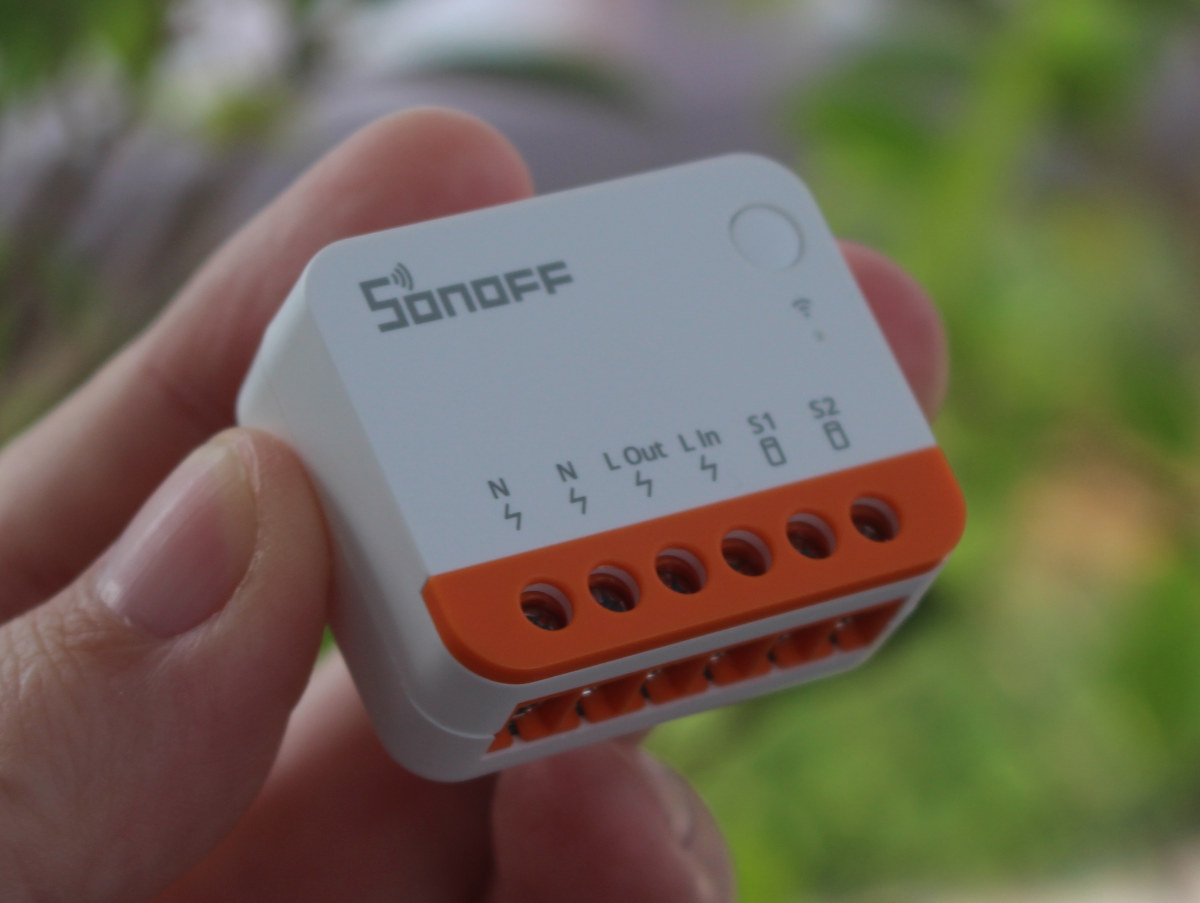ESPHome is the favorite open-source firmware of Smart Home devices, but Tasmota is another option that’s been available for many years. We’ve just seen fewer products based on Tasmota (previously Sonoff-Tasmota) in recent years, but it recently showed up on a credit card-sized quad relay board, and I’ve just come across Maker Go’s Xcrhom T4S WiFi Outdoor Smart Socket that also ships with Tasmota firmware and sells on AliExpress for $24.88 shipped. The Xcrhom T4S exposes two sockets with dust and rainproof covers to be used safely outdoors, integrates a power meter, and the Tasmota firmware enables MQTT support, Home Assistant compatibility, and support for Amazon Alexa and Google Assistant. Xcrhom T4S specifications: Two EU sockets Max load – 3680W in total (16A x 230V) Rated Current – Up to 16A in total Power Input – 100 to 240V AC 50Hz Wireless – 2.4 GHz 802.11b/g/n WiFi 4; Tx power […]
Credit card-sized quad relay board runs Tasmota firmware on ESP32 module (Crowdfunding)
The “ESP32 IoT Relay Board” is a credit card-sized ESP32 board with four small 250VAC/30VDC 7A relays that runs Tasmota open-source firmware and supports Alexa & Google Assistant for voice control. There are so many ESP32-based relay boards on the market that I don’t usually feel the need to cover new ones, but Igor Mileshin’s ESP32 IoT Relay Board is smaller than most so I thought it might be interesting to some. The smallest quad-channel relay board I’ve seen so far is the one by Seeed Studio using an STM32 MCU and solid-state relays that measures just 60 x 40mm, but the relays only support up to 2A. ESP32 IoT Relay Board specifications: Wireless module – ESP32-WROOM-32D SoC – Espressif ESP32-D0WD dual-core Tensilica LX6 processor @ 240 MHz Storage – 32Mbit SPI flash Connectivity – Wi-Fi 802.11 b/g/n up to 150 Mbps, Bluetooth 4.2/5.x LE Relays 4x “industrial-grade” relays supporting […]
GGBEE RMW002 WiFi AC smart switch supports Alexa, Google Assistant, and Cozy Life app
The GGBEE RMW002 is a mini WiFi AC smart switch designed to make your appliances smarter. It supports a voltage range of 100-240V AC and a maximum current of 16A/20A. With built-in WiFi, the switch connects to the Cozy Life app for easy remote control of your appliances. It also supports voice commands through Amazon Alexa and Google Assistant allowing for hands-free operation. Additional features include group control, countdown timers, and dual-control wiring options. The device has very similar from-factor and features to that of a SONOFF ZBMINIR2 or SONOFF MINI Extreme (MINIR4M) but there are significant price differences if you are comparing the RMW002 to any SONOFF devices since the GGBEE switch is quite cheaper. GGBEE RMW002 specifications: SoC – Boufallo Lab BL602 32-bit RISC-V wireless SoC Connectivity – 802.11 b/g/n Wi-Fi 4 via BL602 Input Voltage range – 100-240V AC (50/60Hz) Max Current: 16A or 20A depending on […]
Maker Go ESP32-C6-EVB quad-relay board supports Wi-Fi 6, BLE 5, Zigbee for smart home applications
The Maker Go ESP32-C6-EVB is an open-source development board built upon the ESP32-C6 module. It integrates four relays and four opto-isolated inputs and supports multiple wireless technologies including Wi-Fi 6, Bluetooth Low Energy 5.0, and Thread/Zigbee. The Espressif ESP32-C6 on the development board is a single, RISC-V system-on-chip with 2.4GHz Wi-Fi 6 (802.11ax), Bluetooth 5 (LE), and Thread/Zigbee (802.15.4). It is integrated into the ESP32-C6-WROOM-1-N4 module with an onboard PCB antenna, 4MB of SPI flash, and 23 GPIOs. We have seen a fair amount of ESP32-C6 boards recently, including the SparkFun Thing Plus, WeAct ESP32-C6-Mini, ESP32-C6-Pico, and the ePulse Feather C6. Maker Go ESP32-C6-EVB specifications: Wireless module – ESP32-C6-WROOM-1-N4 module with Espressif Systems ESP32-C6 single core 32-bit RISC-V processor @ 160 MHz with 2.4 GHz WiFi 6 1T1R with Target Wake Time (TWT) support, Bluetooth LE 5.0, and 802.15.4 radio for Zigbee, Thread, Matter, 2.4GHz proprietary Storage – 4MB SPI […]
Review of SONOFF BASICR4 Smart Switch and S-MATE2 Smart Remote Control
We’ve received two new devices from SONOFF for testing, namely the BASICR4 Smart Switch and the S-MATE2 Smart Remote Control. For those familiar with SONOFF devices, the Basic series is well-known as it was one of the initial products SONOFF introduced to the Smart Home market. It’s a Wi-Fi switch that can be used for various purposes, including controlling lights, fans, and other electrical devices. The BASICR4 model enhances capabilities while reducing costs compared to its predecessor. The S-MATE2, on the other hand, is the second version of a simple Remote Controller powered by batteries. It wirelessly connects to other SONOFF devices that support the eWeLink Remote Gateway feature, enabling full control within the same ecosystem. This expands its usability across different devices. Let’s delve into the details. SONOFF BASICR4 Introduction The Basic series has been a long-standing Wi-Fi Switch family allowing control of electrical devices through the eWeLink app […]
Meet the $1,000 ESP32 board with 512 GPIOs (12V/24V)
KinCony IoT’s KC868-A566 is an ESP32 WiFi & BLE IoT board with a massive 512 GPIOs, more specifically with 256 12V/24V digital outputs and 256 digital inputs that should meet most people’s requirements, except for its price, as it is currently selling for $1,000 on Aliexpress. The board is based on ESP32-WROOM-32E, and besides the massive numbers of GPIOs, also adds four analog input ports, an Ethernet port, and an RS485 connector. The company also made sure it can run ESPHome open-source firmware and integrates well with Home Assistant open-source home automation framework. KinCony IoT KC868-A566 board specifications: Wireless module – ESP32-WROOM-32E with ESP32 dual-core microcontroller 4MB flash 2.4 GHz WiFi and Bluetooth LE connectivity, built-in PCB antenna, fully compatible with ESPHome firmware Ethernet – 100/10Mbps Ethernet via vertical RJ45 jack USB – 1x USB Type-C port Serial – RS485 interface I/Os 256x MOSFET outputs (12V/24V 5000mA per channel) with […]
SONOFF iHost Review – A future-proof Smart Home Hub for local control
ITEAD has sent us a Sonoff iHost Smart Home Hub for review, and this device seems to be what many SONOFF fans have been waiting for, especially in terms of local control. meaning it can work without an Internet connection. SONOFF is known for its durable devices and good interoperability, but they are still catching up with other companies in terms of local control. Finally, the iHost Smart Home Hub fills the gap. In addition to local control, it also comes with privacy features as data stay local. SONOFF plans to expand its ecosystem by including devices from other brands compliant with standards such as Zigbee 3.0. Furthermore, the iHost Smart Home Hub is more like a platform than just a product, as it has add-ons to add more capability over time. In the future, it can be expanded to support the new “Matter” standard, similar to Home Assistant. The […]
SONOFF MINI Extreme (MINIR4) ESP32 WiFi smart switch can fit into most gang boxes
SONOFF MINI Extreme (aka MINIR4) is a ridiculously small WiFi smart switch based on ESP32 wireless microcontroller and designed to be connected to a load such as a light bulb and a wall switch that can be a momentary switch, a door exit switch, an SPDT switch, a latching switch, or even dry contact sensors. The tiny form factor (39.5×33 x16.8mm) enables the WiFi smart switch to fit into various boxes, even the smaller European gang boxes. Just like other SONOFF home automation devices, the MINIR4 works with eWelink mobile app, but it also implements some new interesting features such as the ‘Detach Relay’ mode. SONOFF MINI Extreme (MINIR4) specifications: MCU – Espressif Systems ESP32 dual-core wireless microcontroller Connectivity 2.4 GHz WiFi 4 Bluetooth LE used for pairing Input – 100-240V ~ 50/60Hz 10A Max Output – 100-240V ~ 50/60Hz 10A Max (resistive load) Dimensions – 39.5 x 33 x […]


